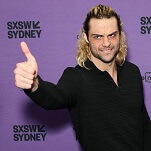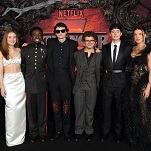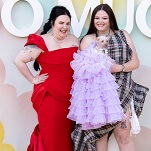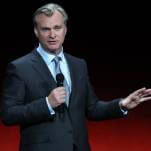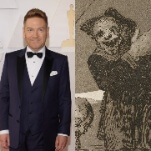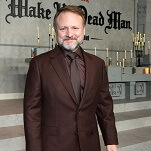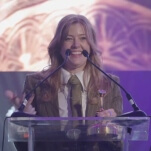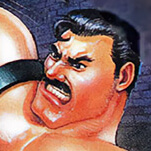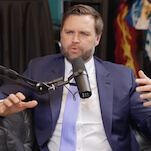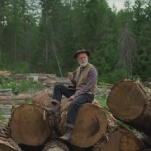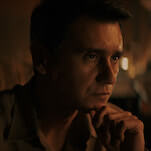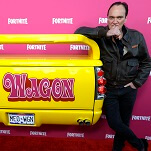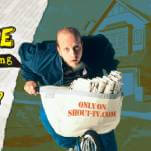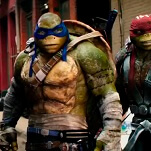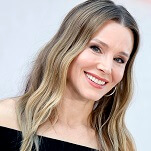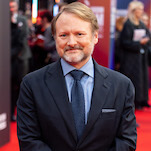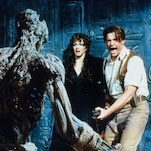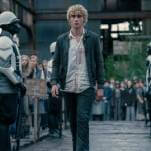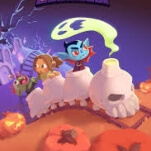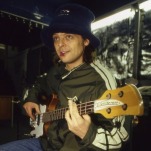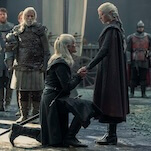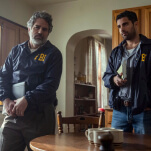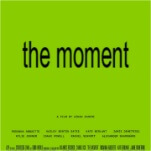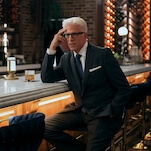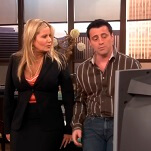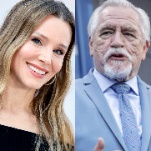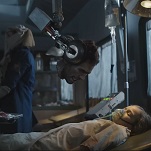Samantha Morton
As an actor, Samantha Morton rarely seems to be holding back, but she’s never bared herself in front of the camera the way she does in her directorial debut, The Unloved, which is now out on DVD. Although written by Red Riding’s Tony Grisoni, the story is based on Morton’s life. It follows Lucy (Molly Windsor), a young girl taken from the house of her abusive father (Robert Carlyle) and placed in care, which here means an antiseptic government-run facility whose employees show more interest in bedding her roommate than helping her work through her trauma. Morton’s own life was substantially harder—she’s said in interviews that she was sexually as well as physically abused—but The Unloved is more devoted to capturing the subjective sensations of Lucy’s detached relationship to the world than lodging a protest against the UK’s childcare system. (That said, it’s impossible to come away from the film without feeling that something urgently needs to change.) In high demand as a performer—she just finished shooting David Cronenberg’s adaptation of Don DeLillo’s Cosmopolis—and raising two young daughters to boot, Morton carved out some time on a Friday evening to talk to The A.V. Club about revisiting her past, how learning to act was her salvation, and the upside of The Unloved’s decade-long journey to the screen.
The A.V. Club: The screenplay for The Unloved is credited to Tony Grisoni, based on original material from you, which essentially means your life. Like your main character, you were raised in care in the UK, and were abused as a child. And yet the film is deliberately not an autobiography. How did you find the balance between drawing on your own experience and telling a story distinct from it?
Samantha Morton: Originally, I was trying to write a screenplay based on a play I devised about the subject matter a few years ago, and to be honest, it wasn’t going very well. I got 40 pages in and it would take me just forever, because each page, I would try to make absolutely perfect. Each page would have a month of rewrites on it. So I met up with various producers who were giving me all these parameters in order to get the money, how I needed to make it, how it had to be on digital, it had to cost £250,000, it had be shot in three weeks. You know, all these kinds of limitations, and I thought, “This isn’t how I want to make my first film at all.” I met Kate Ogborn at a friend’s wedding, and I hadn’t seen her since we did a film called Under The Skin [in 1997]. She said, “What are you up to?” And I kind of talked about my acting work, “But really, I’m desperate to do this film.” She had some memory of us having a chat about it when I was 19, 20, and here I was now, turning 30, and I hadn’t made it. So we met up and she said, “I think you should make it.” Having a producer like Kate on board—she’s very prolific. Her passion for film—she immediately wanted to bring out the best in me.
One of the first things we looked at was hiring a writer to work with me, someone who was used to working with writer-directors, and someone that would be, I suppose, kind and empathetic to the story. And handle me well, because it’s tough subject matter. So we met Tony, and I was thinking, “He’s far too famous and brilliant and expensive to want to come to work with me, irrelevant to how charmed he might become.” Because I wanted, obviously, to win him over, but at the end of the day, it’s not just about how charming you can be. It’s about the reality of sitting in a room together for weeks on end, writing a film together. But he took all my material away that I had already written; it was in a small suitcase, like a Samsonite suitcase. There was storyboarding and scripts—I’d written so many scripts. I got some of them to 30 pages, some of them got to 40 pages, some of them got to 15 pages—endless rewrites on the material. Obviously, lots of synopses. And the play. He was so sweet. He went through everything, and we met up again and he said, “We should just start again.” I went “Okay! Great! Brilliant!”
So we met up and it was starting from the beginning, really. So we went through my life together. We sat with coffee and talked and went over everything up until a certain point. We decided, legally, what we could and couldn’t do. And then we slowly removed me, if you like, from the equation, and invented a girl who would have elements of me, but also elements of other people that shaped me, other people I met and lived with. So Lucy became an amalgamation of all sorts of characters that had been in my life, and also the older girl who Lauren Socha plays; she’s called Lauren in the film. She, too, had major elements of my life when I was a teenager. So it was using my experiences, but putting them onto lots of different characters, if that makes sense.
Where Tony was incredible was, we’d talk in the morning. My baby was tiny then, Edie, and I’d sit and breastfeed her. She was only 6 weeks old. He’d throw a log in the fire, we have this lovely fire in my front room, and we’d just sit and talk. It grew out of facts, and then Tony would go away with it and work his magic, if you like. So it was like something we created together. I certainly don’t have the skill to write how he can write, and make it all compact and precise and eloquent and simple. He was able to do that. When he sent the first draft of the script to me, I was actually at my stepfather’s funeral that day, and he sent the script through. Edie was now three months old, and we were sitting a hotel in Newcastle, and I read it and thought, “It’s just amazing. He’s just really, really brilliant.” I felt really in awe, and also proud that that it wasn’t just… I mean, it is autobiographical, but it doesn’t feel like I’d laid everything so bare. There is a lot that can’t be in for legal reasons. And also, she becomes her own character. The minute you cast that kind of part, asking someone to play you, you want to bring out the best in them as an actor to deliver the character.
AVC: You shot in Nottingham, where you grew up, in some of the real places where things happened to you. Was it strange or disorienting to revisit the past in that way?
SM: It was strange, but at the same time, if I had made it when I was younger, it would have been too strange. I think the fact that it took 10 years to get it together and then a further three years in production—it becomes existential, in a way. You’re not part of it. You’re looking in on it, and it doesn’t feel that personal when you’re making it. The time, it felt really personal for me in the edit. Because then you’re not busy. You don’t have, like, 60 crews around, wanting you to make decisions on a minute-to-minute basis. You don’t have a big cast to look after, asking you what to do, trying to look after people. It’s a very, very different world when you go into the edit. Colin Monie, the editor, treated me with so much respect and care, and he had a huge amount of patience with me. Because whilst he was there and he’d done the rough assembly of what we shot, there was a lot of stuff that, as we were shooting it, I realized didn’t need to be in the film. And the film would change again whilst I was shooting it, and then change again as I was editing.
One of the major things was that I’d been incredibly specific in the detail of the shot list whilst writing it with Tony, and a lot of that was based on memory and on photographs. Therefore, in a way, for me, they couldn’t be messed with, because if I was to direct it, I had to direct it from the visions in my mind, you know what I mean? If I veered off that, then it became something different, and I was quite tough on myself. For the children’s-home stuff, I knew every single shot. I was begging Kate if we could build a set, because we couldn’t go to the real place. They wouldn’t let us, because children still live there. There were certain sequences in the film that I just couldn’t get because I needed to be on a specific location. If we couldn’t be there, I needed to build it, and unfortunately, we didn’t have the money, because I’d chosen to shoot on film. The money was really tight. And then all of a sudden, I’m thrown into this situation where you have to think on your feet, you’ve got to find a location very quickly, and you have to shoot in there, and you have to use the raw material, not go back to what your memories are. In a way, I had to divide the film up into chapters, different films within the film, if that makes sense. Which, I think, for some people was quite odd. But for me, Lucy’s world was very different in the children’s home. It was very, very claustrophobic, all those children in that small space without any light upstairs. We had to figure that out quickly.
